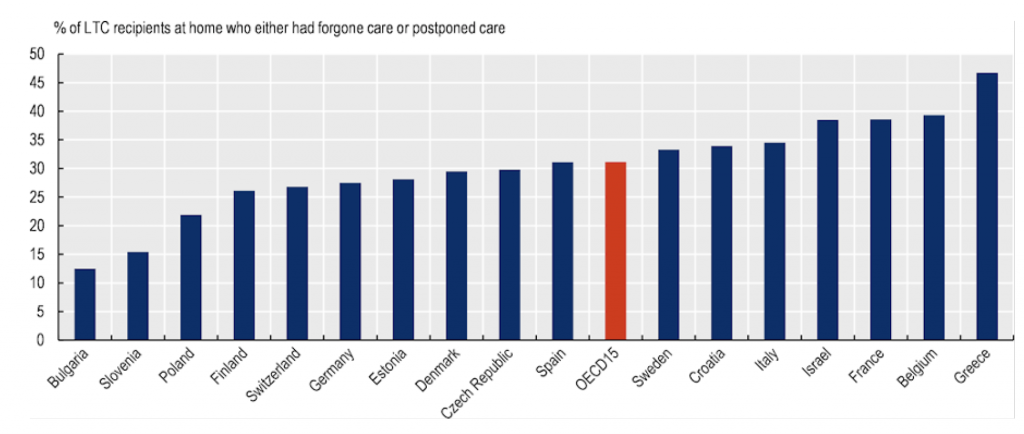
[ad_1]
Two years into the pandemic, governments worldwide have began to chill out their social distancing insurance policies. Nevertheless, healthcare techniques proceed to be severely impacted by ongoing infections and a rising backlog of sufferers ready for deliberate remedies.
Whereas vaccines have been extraordinarily profitable in decreasing hospitalization and mortality charges, an infection management insurance policies proceed to have an effect on our hospitals’ common operations. In lots of respects, COVID-19 created an ideal storm. It got here at a time when many healthcare techniques have been already severely burdened, coping with an rising burden of illness inside ageing populations, and persistent workers shortages.
The pandemic suspended most non-urgent, elective procedures and ambulatory care; consequently, the care backlog elevated. In England alone, 6 million folks have been ready for remedy on the finish of December 2021. It’s estimated that 8 million folks have undiagnosed situations, and these are the individuals who stayed away from their healthcare suppliers for worry of catching COVID-19.1 The scenario is comparable throughout Europe and North America, with the Group for Financial Co-operation and Improvement (OECD) reporting important numbers of individuals with long-term situations lacking important facets of their care.2

They are saying, “necessity is the mom of innovation,” which was clearly the case in the course of the pandemic. Speedy growth of vaccines, novel use of medicines to deal with contaminated sufferers, and monumental acceleration of digital care paint an image of innovation. Put up-pandemic, some commentators are suggesting this innovation ought to proceed with the restoration, giving international locations a novel alternative to alter issues for the higher, addressing well being inequalities, and rising sustainability.3
From a expertise perspective, healthcare suppliers can make the most of the teachings realized all through the pandemic. They will implement new methods to speed up the move of sufferers from their backlog into remedy after which onto a swift discharge and rehabilitation.
At every stage of this journey, keeping in regular contact with the patient can be essential to the success of your complete course of. In some ways, the operational complexity of managing backlogs, medical capability, and workers schedules echoes the complexity and interdependencies of the underlying technical infrastructure. Maintaining sufferers rapidly flowing by way of the system requires every cog in that system to work flawlessly, always.
Adopting a cross-architectural view of their IT infrastructure and a platform strategy will allow healthcare suppliers to speed up their digital capabilities, automate patient outreach through technology and self-service, and improve the move of sufferers by way of the care continuum.4
From a affected person’s perspective, healthcare suppliers ought to be deploying digital options that may:
- Make the most of the time earlier than remedy to coach and inform sufferers about their situation5
- Monitor adjustments in circumstance that will alter the precedence or remedy pathway
- Collect pre-operative data and put together sufferers for admission
- Streamline the journey by way of the hospital by monitoring folks and property
- Cut back in-patient stays by enabling sufferers to go dwelling as quickly as they’re medically match
- Stop pointless readmission by offering post-acute distant care or monitoring
- Observe every stage of the digital journey to make sure it’s assembly expectations
In the end, the variety of sufferers ready for remedy will normalize when care groups have the capability to deal with them. Whereas automated processes and synthetic intelligence increase the abilities of a healthcare skilled, they are going to by no means exchange the human contact. To handle the workforce challenges, healthcare suppliers might want to reimagine medical operations and undertake technology-driven processes that improve effectivity. This can reduce the burden on medical workers and maintain folks inside the healthcare occupation.
Speedy innovation was commonplace on the top of the pandemic, with virtual care turning into the norm. Though the direct impression of the pandemic on society is now waning, there are extra folks ready for remedy now than ever earlier than. To handle this backlog, healthcare suppliers should proceed innovating, increasing their digital provides by investing of their underlying technical infrastructure, adopting a cross architectural strategy, and guaranteeing that their digital options present a frictionless expertise to sufferers and workers.
Sources:
- NHS backlog & waiting times in England
- Rising from the COVID 19 crisis: Policy responses in the long-term care sector
- WHO Manifesto for a healthy recovery from COVID-19
- The platform play: How to operate like a tech company
- NHS Wait Well program
Share:
[ad_2]